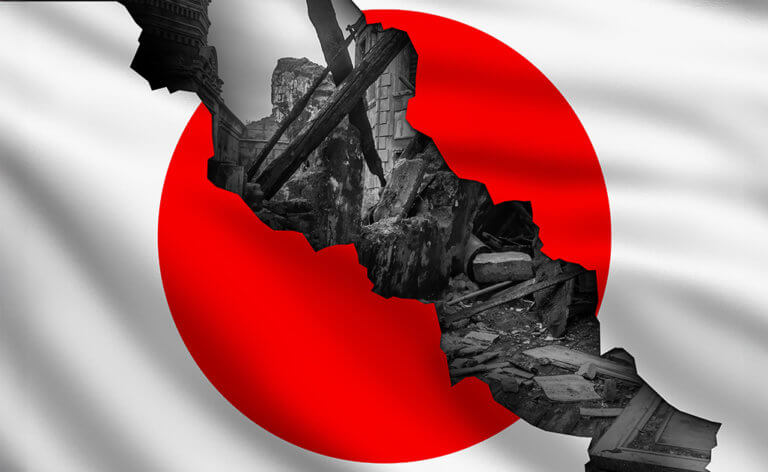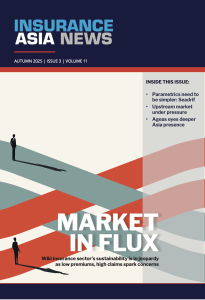SIRC: Trillion-yen loss year in Japan a matter of ‘if not when’, says Swiss Re’s Atsuhiro Dodo
November 3 2025 by Mithun Varkey
The next JPY1 trillion (US$6.6 billion) catastrophe loss year is not a matter of if but when, according to Atsuhiro Dodo, head of Japan at Swiss Re.
The industry is increasingly focused on proactive resilience – leveraging scenario modelling, visualising exposure and underlying risks at macro and micro levels and advocating for greater insurance penetration to narrow the protection gap, Dodo added.
“In Japan, demand for natural catastrophe insurance continues to grow, driven by heightened risk awareness following recent quakes, and by inflation which has pushed up wages, repair and reinstatement costs, and consequently the valuation of property assets,” Dodo said.
The growing risk of secondary perils such as hail, flash floods and localised windstorms are becoming a larger share of Japan’s natural catastrophe losses. In 2024, severe convective storms (SCS) drove record insured losses of around US$1.3 billion, the highest ever recorded for Japan, he noted.
“These events highlight how rising urbanisation and the accumulation of valuable assets in hail-prone and flood-exposed areas are amplifying risks,” he said.
“These trends have prompted a more granular approach to underwriting, with a focus on location-specific risk selection and refined accumulation controls, for instance by sub-perils.”
Swiss Re, Dodo noted, “regularly updates its proprietary models to ensure the view adequately reflects our current risk landscape, while also developing data/tech-driven innovations that support proactive risk mitigation with location intelligence data”.
Looking beyond cat
Japan has been successful in offering and developing one of the most advanced and data-driven cyber insurance markets in Asia Pacific, he noted, adding that it has been fast growing over a decade and still has high potential – particularly among SMEs.
“We are part of this growth journey. We support fulfilling customer’s increased risk awareness in cyber and offering technical exchanges for the sustainable growth of the market,” Dodo added.
“Future success will hinge on the industry’s ability to close the SME protection gap.”
Outside of cyber, Dodo said: “We observe clients taking a more prudent approach to line size management and risk selection both in domestic and international markets.”
While the initial driver was to address the underperforming domestic property market, he said: “This approach has since expanded to interests abroad exposures, following the industry’s recent experiences with large-scale events such as the floods in South Africa and wildfires in Hawaii and LA.
“Japanese manufacturing companies, which have steadily increased their foreign direct investments since 2000, now have significant overseas exposures.
he added.
“Clients also pay a close attention to terms and line size in liability business, particularly given the impact observed from liability claims inflation in the US. They anticipate potential future impacts from rising litigation costs.”
Japan’s global ambitions
Japanese insurers remain active acquirers, being highly capitalised and liquid while under regulatory pressure to unwind cross-shareholdings.
This coupled with limited domestic growth opportunities, has fuelled strong inorganic expansion overseas, particularly in the US and in specialty insurance lines.
Excluding one-off profits from selling off cross-shareholdings, 60-70% of underwriting profits for the three mega insurance groups in the last fiscal year came from overseas entities.
“This is a transformational change over a decade which has implications on many aspects including retention strategy and reinsurance purchase. We listen to clients and keep pace with their moves and aspirations,” Dodo said.
“Reinsurance can also be considered as an alternative to own capital and a strategic enabler for M&A.
“It frees up regulatory capital, while legacy deals such as portfolio transfers can release trapped capital. Retrospective reinsurance such as adverse development covers help carriers divest or ring-fence old and long-tail portfolios, accelerating capital release that can be redeployed into acquisitions.
“We are addressing reinsurance integrated into the transaction process, which helps increase alignment between buyers and sellers and mitigate the risk of adverse post-acquisition outcomes.”
-
QBE | Elevating customer experience, humanising claims: QBE Asia’s ‘Solutions in a Box’
Vastly improving turnaround times and personalising service delivery, QBE Asia’s award-winning, end-to-end bundled claims solutions is a game-changer for the insurance industry.
-
Beazley | What does cyber protection look like from day 1 to day 600 and beyond?
Cybersecurity is no longer just an IT concern, but a governance issue that belongs on the boardroom agenda.
-
Sedgwick | Preparing for the next storm
Insurance industry needs to recalibrate, invest in innovation and strengthen systems, talent and data practices.
-
Peak Re | From climate modelling to market opportunity: Forging a new clarity on Southeast Asia’s climate risk
Southeast Asia's protection gap: a crisis of clarity, not just capital

